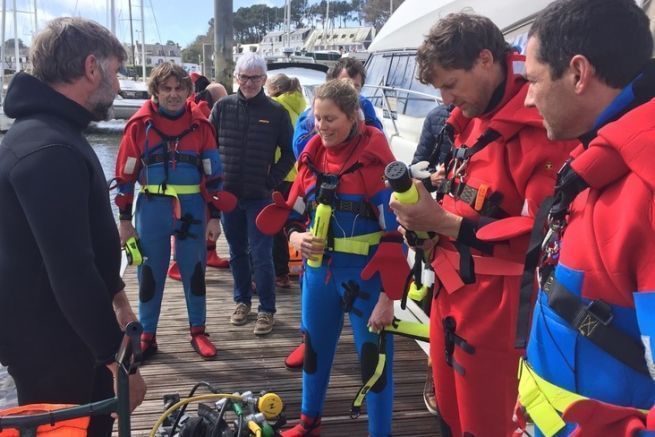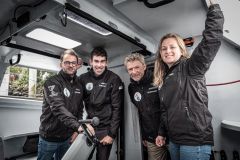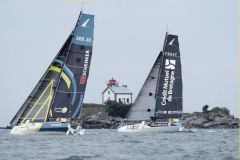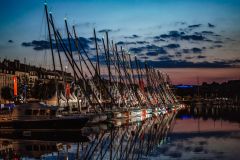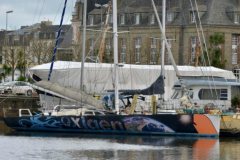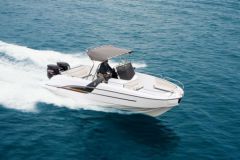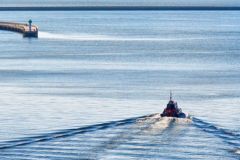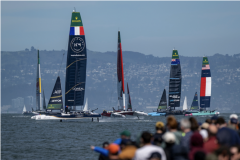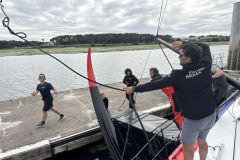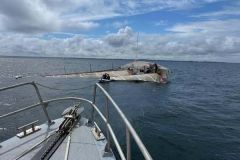Two weeks after the departure of the 9 e edition of the Vendée Globe, the 33 skippers have already had their share of mishaps: torn sails, hook problems, burns, net caught on the rudders, collision with a UFO... They have also had to cross two lows and face winds of up to 60 knots... In short, every day the skippers are confronted with new situations and put their safety at risk.
Whether it is the preparation of the boats or the preparation of the skippers, safety in the Vendée Globe remains the priority.
A specific regulation for the IMOCA Class.
The boats taking part in the Vendée Globe race must comply with the IMOCA rule in terms of safety.
" There have been many technical developments to avoid accidents. We remember the 5th January 2008, when Jean Le Cam capsized following the loss of his keel bulb as he rounded Cape Horn. Since then, Imoca boats have been unsinkable, the bulbs have gone from 1.5 tonnes to 3 tonnes, allowing the boats to right themselves. "
One of Manuel Guedon's roles, as assistant measurer on the IMOCA Class and safety specialist, is to check that the rules are being followed. Numerous tests are carried out before the race, including the measurement test. " The boats are put through their paces, lying at 90°, in order to calculate their centre of gravity and determine their angle of capsize."
In order to avoid dismasting (8 in the 6 e edition of the Vendée Globe) the new Imoca boats have been forced to limit their air draft to 29 metres since 2009 by adopting a one-design mast (the same for everyone).
The construction constraints of the Imoca boats have therefore evolved to increase the safety of the skippers on board.
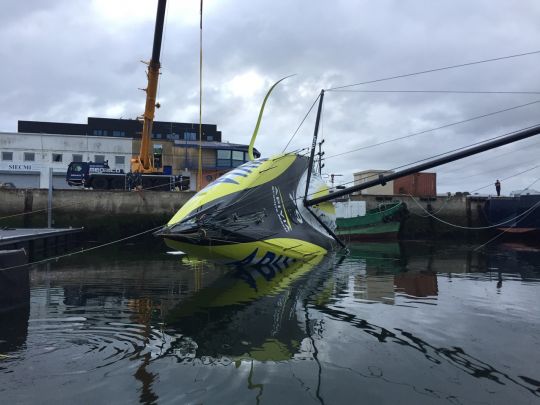
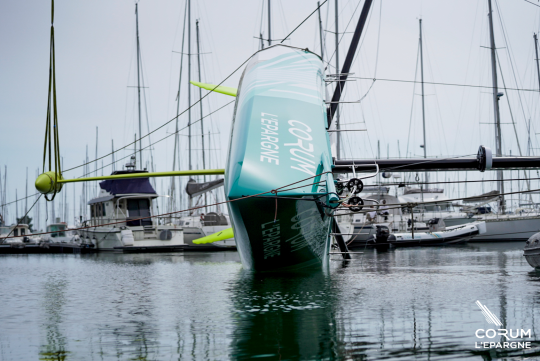
Additional safety equipment specific to the Vendée Globe race
The race requires additional specific equipment compared to other races:
- 2 life rafts instead of one. One outside and one inside in case one of the liferafts is not accessible.
- 2 EPIRBs instead of one. When the skippers find themselves in the Deep South, it is important that their beacon continues to emit a signal until help arrives.

- An area to be smashed that is visible both inside and outside the boat. It is an area that allows the skipper to take shelter in his boat. It allows rescuers to easily locate the skipper from outside, making intervention easier.
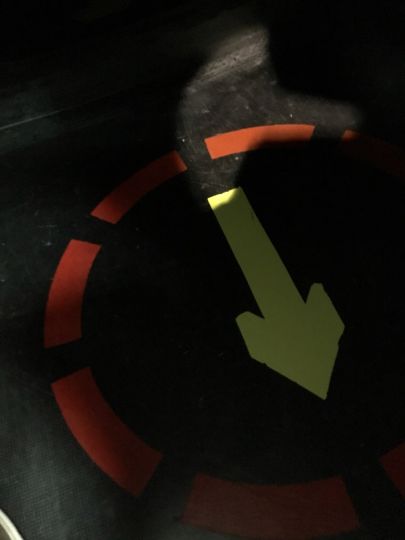
- With the new generation of IMOCA with foils, the helmet has become mandatory in safety equipment.
- Since this 9th edition, they have also had 2 to 3 electric bilge pumps, which allow the water to be evacuated more quickly than with the hand pump. "This new safety regulation was put in place following the accident of Thomas Ruyant during the 8 e edition that hit a UFO in the far south. He managed to get out of it, because he had an electric pump on board with a higher flow rate that worked permanently", indicates Manuel Guedon.
More in-depth safety training for the 33 Vendée Globe skippers.
In addition to the World Sailing training (sea survival) and offshore medical training, the IMOCA Class has set up a safety training course at CEPIM for all the Vendée Globe skippers, which has enabled them to reflect on additional themes such as: marine watch, diving and climbing to the top of a mast alone.
- The marine watch is normally kept 24 hours a day. Except that when you are racing single-handed, sleep is essential, so the watch is not systematic. There are instruments to avoid the coalition. The skippers must know them and master them: AIS, radar, Oscar system... " The main obstacles for the runners are cargo ships and fishermen. We therefore asked a cargo captain, during this training, to explain the vision he had of the IMOCA yachts from his bridge. It's very interesting to confront these two environments and explain why the cargo ships can't always divert," he adds Manuel Guedon.
- The basics of scuba and open water diving. " We learned the basics and did trials in the harbour so that the skippers would be able to dive under the hull and use the tanks if necessary. In fact, Damien Seguin, skipper of Apicil, had to practice this exercise to remove a net stuck in his keel as early as the 3rd day of the race e race day."
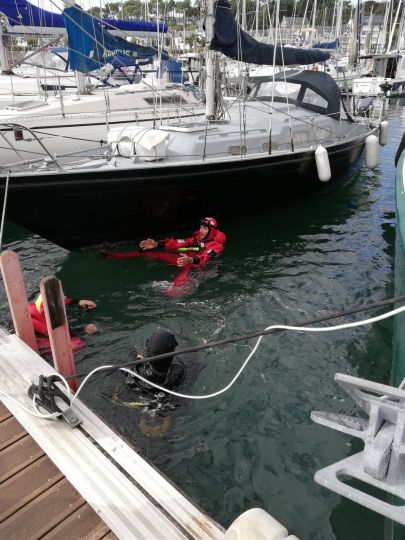
- The techniques for solo climbing to the top of a mast are also revised. " As the masts can reach a height of almost 27 metres, the skippers worked on confidence and learned how to use the tools at this altitude from a specialist in working at heights" A training that the skippers quickly put into practice to repair certain damage. This is the case of Arnaud Boissière who had to climb to the top of his mast on 15th November 2020 to repair his genoa hook or Romain Attanasio who had to climb to the top of the mast to repair his mainsail carriage on 18th November 2020.
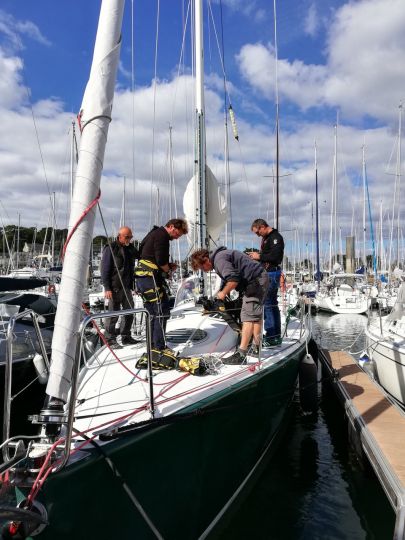
To complete this training, 15 days before the start of the Vendée Globe, the pilots of the French Navy - the 32 F - generally come to do a reminder about evacuation procedures.
Zero risk does not exist
You can see it, ever since the departure of that 9.. e edition, the skippers are confronted every day with new challenges. But thanks to their training and safety tools, they are able to overcome each event and continue their race around the world.

